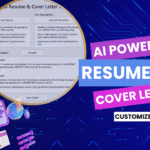Training AI models is the process of teaching AI models to perform specific tasks or a set of tasks by introducing a large amount of data.
Introduction
Training is the process of teaching or developing any skills or knowledge that relate to specific useful competencies. Training AI is also the process of teaching AI models to perform a specific task. For example, imagine you are trying to introduce various types of toys to your infant child. You should show a lot of examples, saying “This is a car” or “This is an apple. Similarly, in training AI, you should provide a lot of examples, like pictures, images, or audio. The AI model then learns to recognize patterns. and later recognize it on its own with the reference data that the trainer provided to it. It will learn from the experience and data so they can perform tasks or make decisions without being programmed for each specific situation.
How to train AI models
In today’s world, quality data is everyone’s most important asset. With AI training models, accuracy and success depend primarily on the quality of the input data. Training of AI models takes place in parallel with teaching the child. This involves a cycle of processing, observing, providing feedback and improving, similar to teaching a child a new skill. The aim of AI model training is to build mathematical models that accurately produce outputs while accounting for different variables, outliers and data complexity.
- Learning from Experience: Just as children learn from their experiences, AI models learn from the data they are exposed to. Children learn by interacting with the world around them, while AI models learn patterns and make predictions based on the data they are trained on.
- Nurturing and Guidance: Children require guidance and nurturing to develop properly, and AI models need careful attention during the training process. Proper supervision ensures that both children and AI models learn the right behaviors and patterns.
- Feedback and Correction: Both children and AI models benefit from feedback and correction. Children learn from their mistakes and guidance from adults, while AI models adjust their parameters based on feedback to improve their performance.
- Developmental Stages: Children go through different developmental stages as they grow, and AI models undergo various stages of training, validation, and testing. Each stage contributes to their overall development and performance.
- Adaptability: Children and AI models both need to adapt to changing environments and new information. They must continuously learn and adjust their behavior based on new experiences and data.
- Unpredictability: Just as children can sometimes surprise us with their actions and development, AI models may exhibit unexpected behaviors or produce unexpected results, especially when faced with novel situations or data.
Keys to successful training AI Models
Here’s a generalized outline of the process:
- Data Preprocessing: Prepare the data for training by cleaning, formatting, and transforming it as necessary. This may involve tasks such as removing noise, handling missing values, normalizing features, and splitting the data into training, validation, and test sets.
- Choose a Model Architecture: Select an appropriate model architecture or algorithm that is well-suited to the problem at hand. The choice of model depends on factors like the nature of the data, the complexity of the task, and available computational resources.
- Training the Model: Train the model using the training data. During training, the model learns to map input data to the corresponding outputs by adjusting its internal parameters. This process typically involves feeding the training data through the model, computing the loss (difference between predicted and actual outputs), and using an optimization algorithm (e.g., gradient descent) to update the model’s parameters to minimize the loss.
- Validation and Hyperparameter Tuning: Evaluate the model’s performance on a separate validation dataset during training. Adjust hyperparameters such as learning rate, batch size, and model architecture based on the validation results to improve performance and prevent overfitting.
- Testing the Model: Once training is complete, evaluate the model’s performance on a separate test dataset that it hasn’t seen before. This provides an unbiased estimate of the model’s generalization ability and its performance on unseen data.
- Deployment and Monitoring: If the model performs satisfactorily, deploy it for inference on new data. Monitor the model’s performance in production and periodically retrain it with new data to ensure that it remains accurate and up-to-date.
- Iterate and Improve: Continuously iterate on the model based on feedback, new data, and changing requirements. This may involve collecting additional data, refining the model architecture, or incorporating new techniques and algorithms.
Types of AI Model Training Methods
- Deep Neural Networks: Deep neural networks are like experts who understand complex relationships among things. They break down big problems into smaller parts, just like Siri or Alexa, those friendly voices that respond to our questions.
- Linear Regression: Linear regression is like figuring out how things are connected. For instance, if you know how much you study (input), you can predict your grades (output). It’s like a simple formula where you change the numbers to see how they affect each other.
- Logistic Regression: Logistic regression helps in making yes-or-no decisions. It calculates the chances of something happening, like banks deciding whether to give someone a loan based on their details.
- Decision Trees: Decision trees are like flowcharts we use in daily life to make decisions. They break down complex choices into smaller, easier ones, like deciding whether to give a loan based on someone’s financial situation.
- Random Forest: Random forest is a team of decision trees working together. They combine their efforts to make better decisions, like predicting what customers might buy based on many different factors about them.
- Supervised Learning: Supervised learning is like teaching a child with a set curriculum and guiding them through lessons. Data scientists teach AI models by showing them examples and giving them feedback.
- Unsupervised Learning: Unsupervised learning is like letting a child explore freely in a Montessori school. The AI explores data without rules, finding patterns on its own, like a retailer understanding customer behavior without specific instructions.
- Reinforcement Learning: Reinforcement learning is like training a pet with treats. The AI learns what actions lead to rewards and adjusts its behavior to get more rewards, like YouTube suggesting videos based on what you’ve watched before.
- Transfer Learning: Transfer learning is like using an experienced teacher’s lesson plan to teach a new subject. AI models reuse what they’ve learned before to tackle new tasks, like using a recipe to cook a new dish.
- Semi-Supervised Learning: Semi-supervised learning is like starting with training wheels and then riding a bike without them. The AI learns from both labeled and unlabeled data, becoming more independent over time.
- Generative Models: Generative models are like artists who create new things based on what they’ve seen. They use a lot of examples to imagine new images or text, like creating artwork or writing stories.
Get paid by train AI

The evolution of AI not only leads to the layoffs of many jobs but also creates a new course of jobs. Here is a list of some companies that will pay to train AI





Discussion (0)
Share Your Thoughts